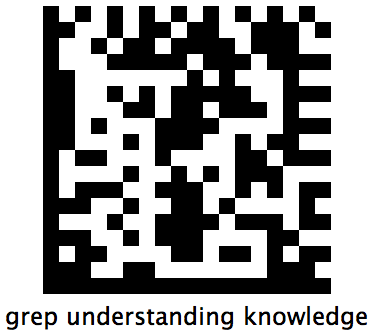We're All in Fractal Microcults
We now have an infinite number of ways to strongly disagree with someone
I just read about semacodes over at KuiperCliff. Semacodes are a really interesting technology that lets you convert a URL into an image that can be read by camera-enabled mobile phones.

There are all sorts of projects based on the technology; the most interesting of which I think is Semapedia, which generates these things for Wikipedia URLs that you can then affix to physical objects.
Very cool stuff.